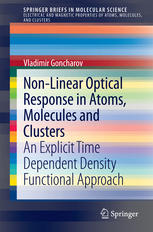

Most ebook files are in PDF format, so you can easily read them using various software such as Foxit Reader or directly on the Google Chrome browser.
Some ebook files are released by publishers in other formats such as .awz, .mobi, .epub, .fb2, etc. You may need to install specific software to read these formats on mobile/PC, such as Calibre.
Please read the tutorial at this link: https://ebookbell.com/faq
We offer FREE conversion to the popular formats you request; however, this may take some time. Therefore, right after payment, please email us, and we will try to provide the service as quickly as possible.
For some exceptional file formats or broken links (if any), please refrain from opening any disputes. Instead, email us first, and we will try to assist within a maximum of 6 hours.
EbookBell Team

4.0
16 reviewsThe aim of this brief is to present, in sufficient detail, a non-perturbative technique for calculating optical hyperpolarizabilities. The ability to efficiently compute hyperpolarizabilities, for a variety of different molecular systems, makes this brief invaluable for those engaged in the computational design of new electro-optical materials. The resulting computation is very predictable and suitable for automation, in contrast to perturbative methods that typically rely on iterative methods. The methodology which is wholly applicable to atoms, molecules, clusters (and with some modifications) to condensed matter, is described and illustrated at a level that is accessible to theoreticians and supplemented with details that should be of interest to practitioners.